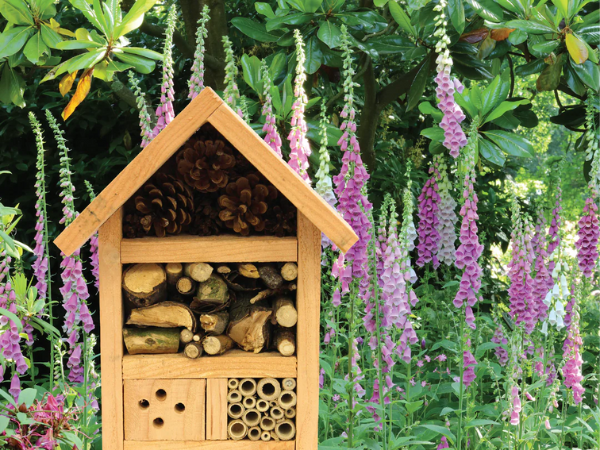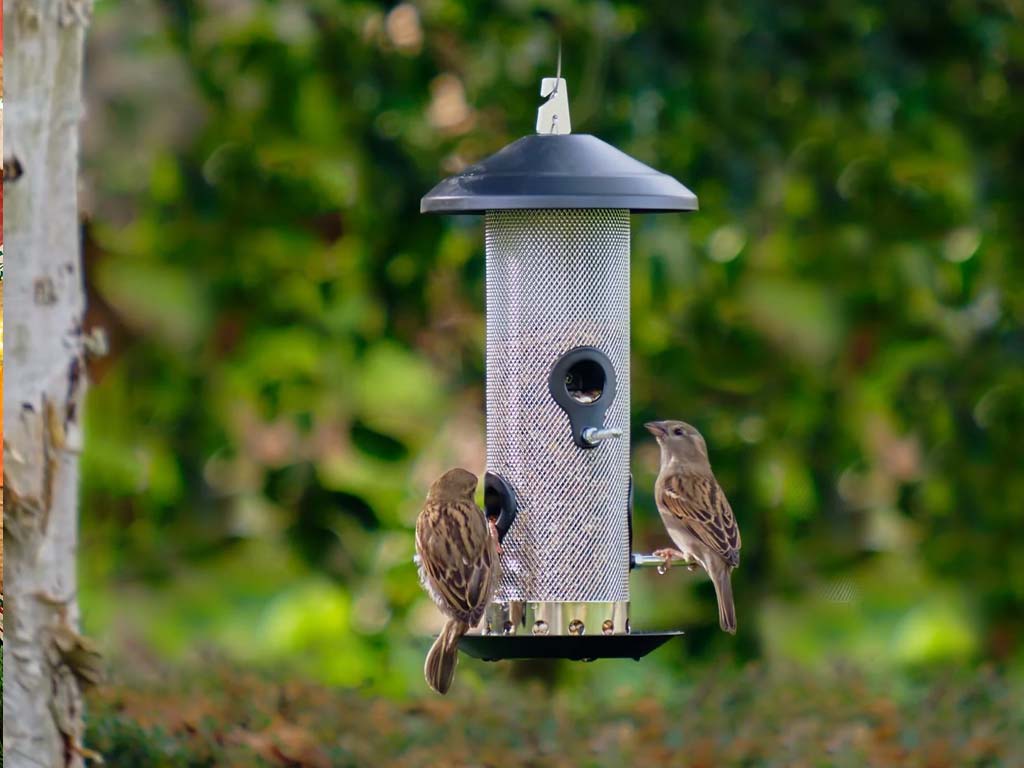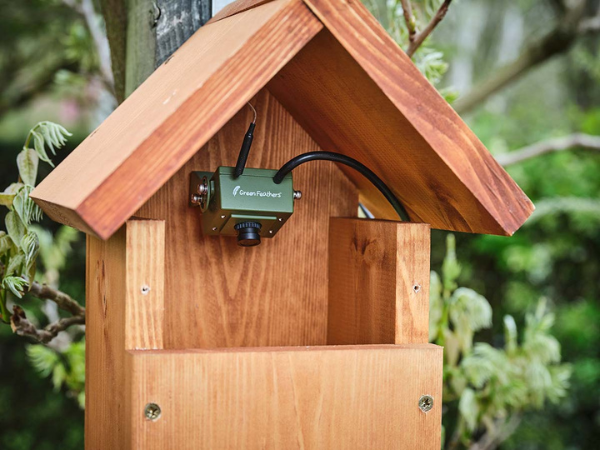Whether you live in a countryside haven or the heart of a bustling city, the chances are that you want your outdoor space to feel like an oasis of escape, even if just for a few minutes each day. Obviously, planting the right things and creating outdoor seating areas to enjoy is part and parcel of this in many cases, but as countless homeowners are realising, there’s also a far easier way to get the peaceful garden of your dreams, and it all rests on the transformative joy of birds.
From beautiful bird songs to pollination benefits and even the opportunity to rid yourself of pests, birds are just one of those creatures that are lovely to have around, both to watch and to enjoy from a distance. What’s more, unlike attempting to attract some rare species of butterfly, getting birds into your garden couldn’t be easier, as we’re going to prove with five fantastic tips to get you started.
1. Provide a food source

There’s no easier way to get birds into your garden than providing a food source, especially during winter and early spring when food elsewhere can be scarce. Birdseed feeders are perhaps the best option for this, especially when placed in prime positions where birds can easily perch, shelter, and importantly, feel safe. Blue tits, great tits, and chaffinches are just some of the species that will surely make themselves at home when feeders are in full supply. Equally, you may prefer to attract robins or long-tailed tits with suet balls, or even blackbirds and starlings with occasional offerings of mealworms that can easily be purchased dried from most local pet stores. Even if birds aren’t forthcoming at first, keeping food sources like these topped up and regularly cleaned should soon see some exciting visitors coming your way. And, once they know that food is there, you can bet they’ll never be too far away!
2. Keep water on tap

While most of us know the benefits of feeding birds, surprisingly few of us consider providing them with water sources as well, assuming that there are already plenty of natural sources for them to take advantage of. This is, of course, true, but with natural water sources often unappealingly dirty and even unavailable when they freeze during cold weather, most birds can’t resist a clean place from which to drink and bathe. During colder weather, even just a regularly topped dish of fresh water will be a welcome addition that brings birds flocking. In the long term, however, you may find that a water bath is the best possible way to not only bring birds into your garden but to also admire them as they prance and wash in plain view.
3. Encourage nesting

While food and water will undeniably bring birds into your garden pretty fast, encouraging nesting is also invaluable, either through the installation of bird boxes and sparrow terraces or even just by making sure that there’s plenty of nesting materials up for grabs (e.g. piles of sticks on the lawn, leaving out dog hair after brushing, etc.). Nesting boxes in sheltered areas and out of direct sunlight are certainly best for ensuring that birds come back to your garden year after year and that you can enjoy the close-up wonders of baby birds as they eventually learn to fly. Simply make sure to securely attach boxes, and clean them out at the end of each nesting season to remove parasites, and also make sure that they’re ready and always appealing to the next generation.
4. Planting bird-friendly plants

While it might not seem an obvious go-to for attracting birds into your garden, thinking hard about what you’re planting in the space can also make a huge difference. Specifically following on from nesting behaviours, hedges like beech, hornbeam, and holly can all provide a great home for species including linnets, thrushes, and yellowhammers, not least because their berries ensure a fantastic continuous food source! Along those same lines, berry-rich trees like rowan and hawthorn can also be great for getting those birds singing, and sticking around. Equally, seedy plants including sunflower and honeysuckle can be great for this purpose, providing food sources that are almost as likely as your bird feeders to increases your bird population exponentially at certain times of the year.
5. Keep it safe

Finally, you’re going to want to keep your garden safe if you hope to attract birds and keep them around for good. After all, even if they risk swooping down for a quick feed, birds are unlikely to return if they see major dangers when they do, such as a prowling cat, an overexcited dog, or even an eager fox. If you have pets at home, then ensuring a safe, bird-friendly space regardless may mean segmenting your garden space so that there are areas in which your pet can’t venture, or simply planning the positioning of things like bird feeders and nest boxes carefully so that there’s no way pets can find a way up to terrorise your visitors. Even if you don't have pets, it’s important to remember that cats, foxes etc. have ways of getting in, especially with the incentive of increasing bird populations to keep them riled up. Avoid this from becoming an issue by again carefully positioning any bird-based additions, but also making sure that your boundaries are as secure as possible to at least minimise this risk, and show the birds that your garden is worth safely spending time in.
The presence of birds truly has the power to transform any outdoor space, and encouraging a healthy population could even see your garden looking better than it ever has done before. What’s more, attracting birds to your garden needn’t be rocket science. In fact, by taking just a little time out to perfect focuses like those mentioned here, you should soon find that you’re able to enjoy birdsong every single day in no time.


























